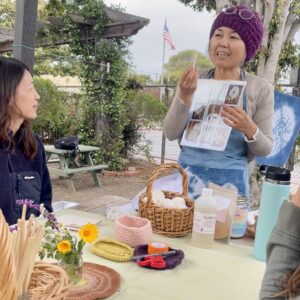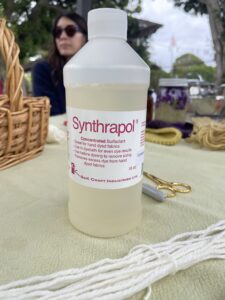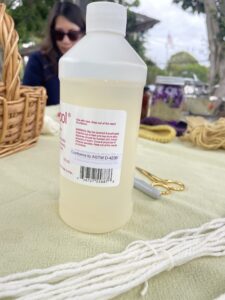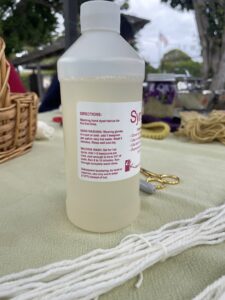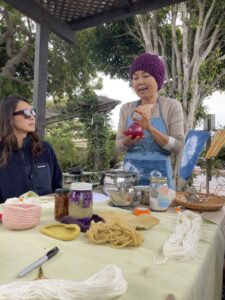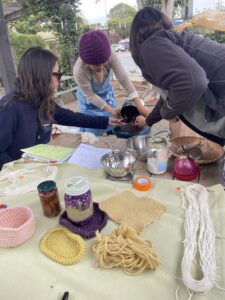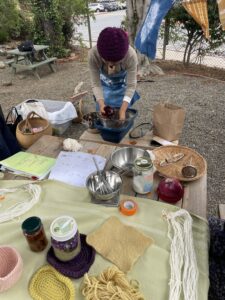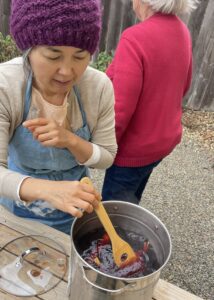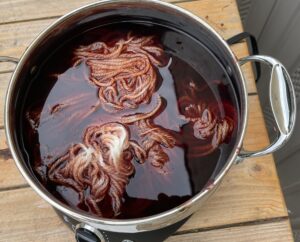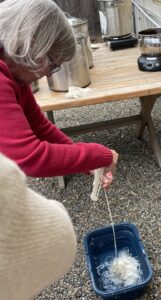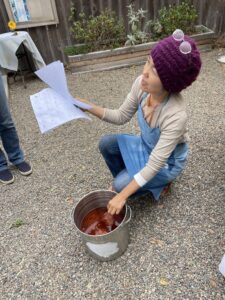Basic Natural Dye Class by Ririko Oshiro, May 23, 2024
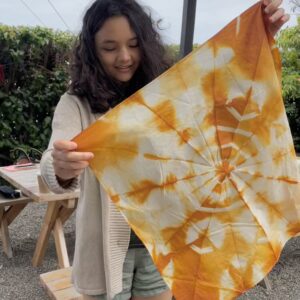
Menu
- About this class
- About The Instructor, Ririko Oshiro
- Tying Shibori Napkins
- Winding yarn for dyeing
- Washing yarn
- Extracting plant dye
- Dyeing
- Rinsing
- Drying
- Journaling
- Results
- Related links
About This Class
Thursday. May 23, 2024
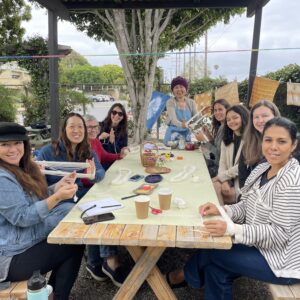
For this beginner’s Basic Natural Dyeing Class, Ririko picked five different, easily found and relatively colorfast dyestuffs for our Basic Natural Dye class: namely, avocado pits, rosemary, onion skins, carrot leaves and madder roots.
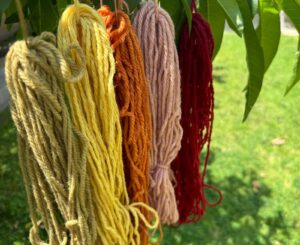
Natural dyeing is a very slow process. It usually takes about 5 days from scouring fibers to rinsing them. …
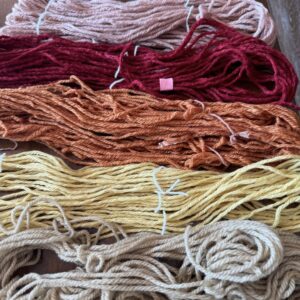
… If we take into account the time to dry the fibers, it would take about 7-8 days, depending on weather conditions.
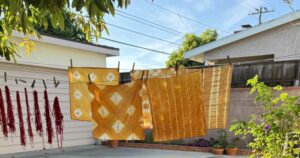
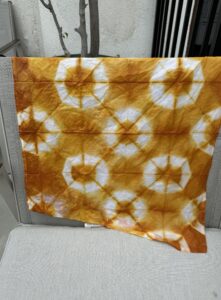
Ririko put in a lot of loving preparation for this class. She also prepared a booklet for each of the students. In them, she described each step with some tips and cautions. The last few pages were left for the students to record their natural dyeing results and to save samples.



“I hope you will find natural dyeing fascinating and therapeutic like I did.”
– Ririko Oshiro, Waldorf handwork teacher. May 23, 2024.

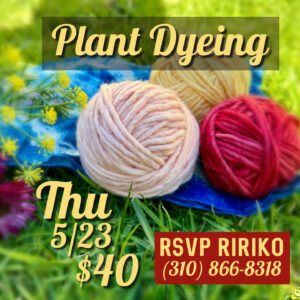

About The Instructor
Tying Shibori Napkins
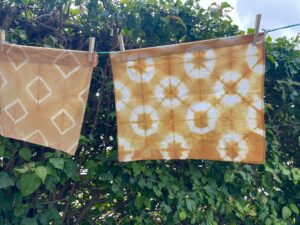
Before class, Ririko has treated the cotton fabric pieces with mordant before bringing them to us. (mordant: a substance that binds the fiber and the dye effectively for long-lasting color.)
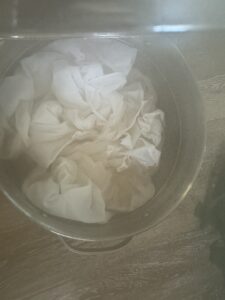
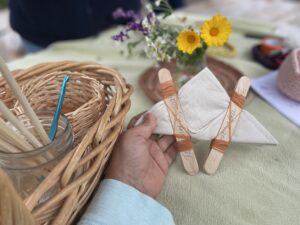
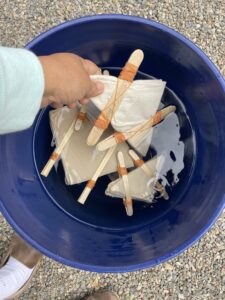
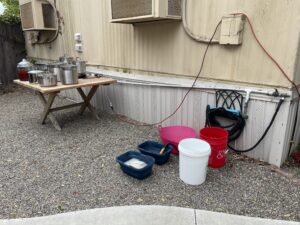

Winding yarn for dyeing
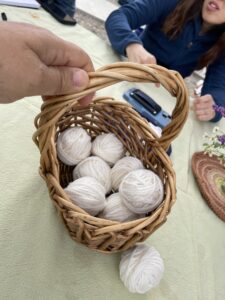
Ririko showed us how to wind up wool yarn for dyeing.
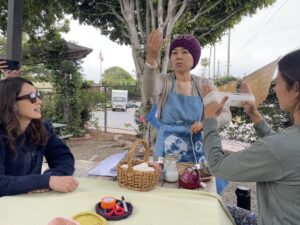
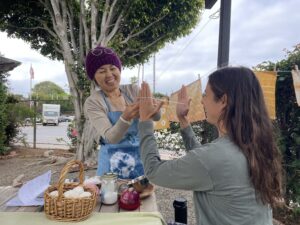
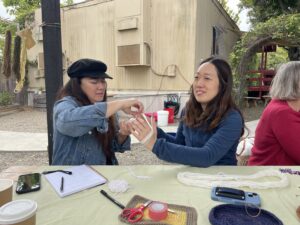

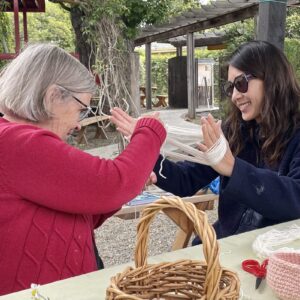
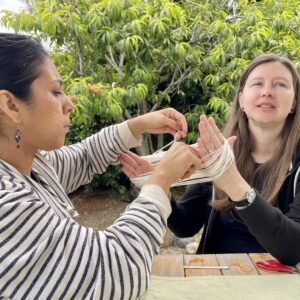
Washing Yarn
Ririko used this pH neutral liquid detergent as a prewash for the dyeing process.
Ririko cautioned us that wool is sensitive to sudden changes in temperature and agitation – which would shrink the fibers. We were reminded to be careful and gentle to handle wool during the scouring process.
Extracting Plant Dye
This beautiful, rich red color was extracted from purple cabbage.
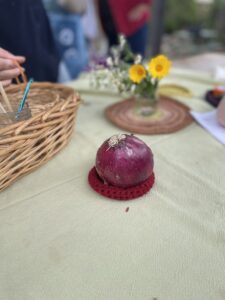
Straining and removing cabbage after dye extraction.
Ririko reminded us to carefully strain and remove all cabbage pieces so we do not get uneven tones in our dyeing process.
Prior to this class, Ririko had been busy extracting plant dyes at home for us:
Onion skins dye pot
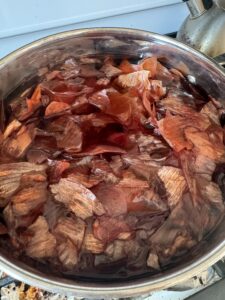
Carrot tops dye pot (Ririko, is this caption correct? – Jzin)
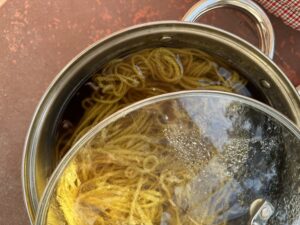
Avocado pits dye pot (Ririko, is this caption correct? – Jzin)
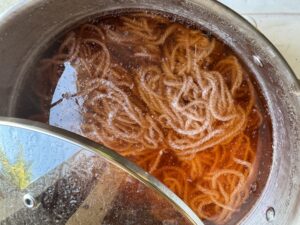
Rosemary dye-pot on the left.
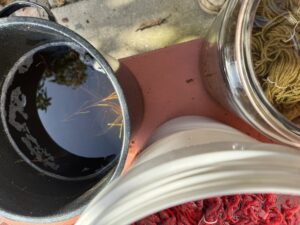
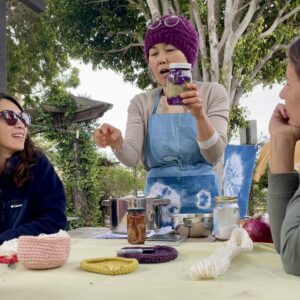
Beautiful jar of yarn, sun dyeing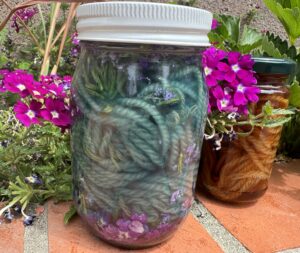
Return to Menu above
Dyeing
The 5 different color batches of yarn were submerged and simmered in different dye pots for an hour.
Ririko used wooden pieces at hand as weights to keep the yarn fully submerged for complete coverage in dyeing.
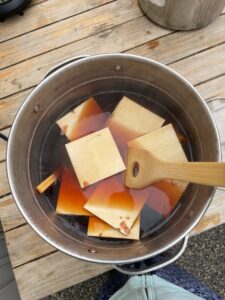
Return to Menu above
Rinsing
Drying
We continued drying our cotton napkin and wool yarn at home…
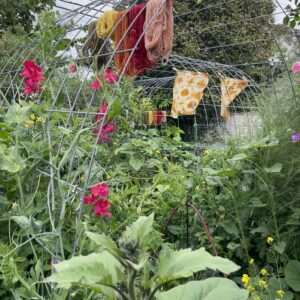
Journaling
Results
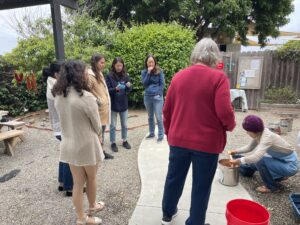
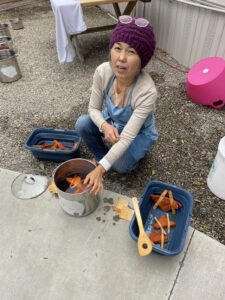
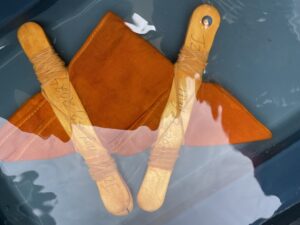
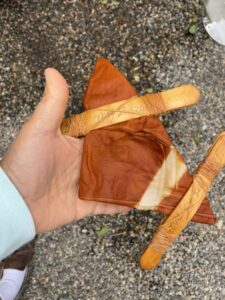
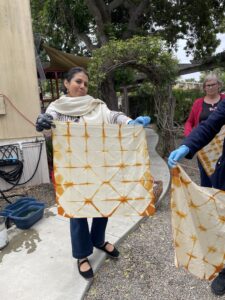

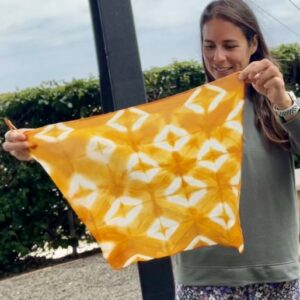
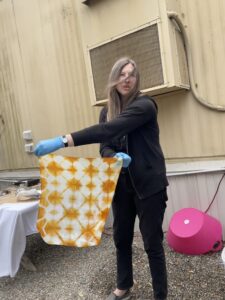
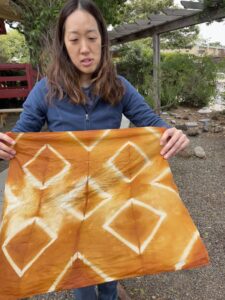
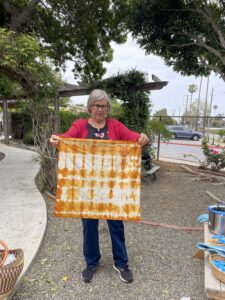
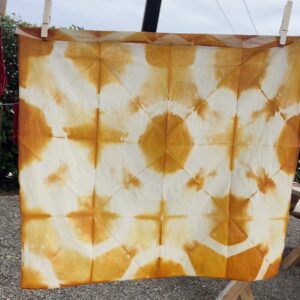
I brought 20 pulled wool angels to Nina to donate to 2024 Winter Festival Elves Workshop.
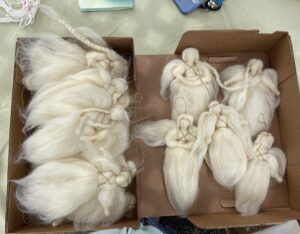
Related Links
- Waldorf Craft Group for Adults in Costa Mesa, California
- Click here if you want to see a photo gallery/blog of our Waldorf Craft Group.
- Come join us – Craft Group 2024-2025 schedule linked here.
- Thursday mornings 8:45am – 12:30pm. Staring again after summer break on September 12, 2024
- Text Jzin for details (949) 400-7082
- Click here to view Castle of Costa past workshops, puppet shows and events
- Summer 2024 Workshop: Apple Cake Tale
- Summer 2024 Workshop: The Unforgettable Summer on the Island of the Gogottes
- Summer 2024 Workshop: Urashima Tarō in the Deep Sea Palace
- Shop Castle of Costa Mesa. Fairy Tale Dolls and Fiber Arts, Handmade with Love.
- Follow us on Castle of Costa Mesa on Instagram here to view upcoming workshops or events.


